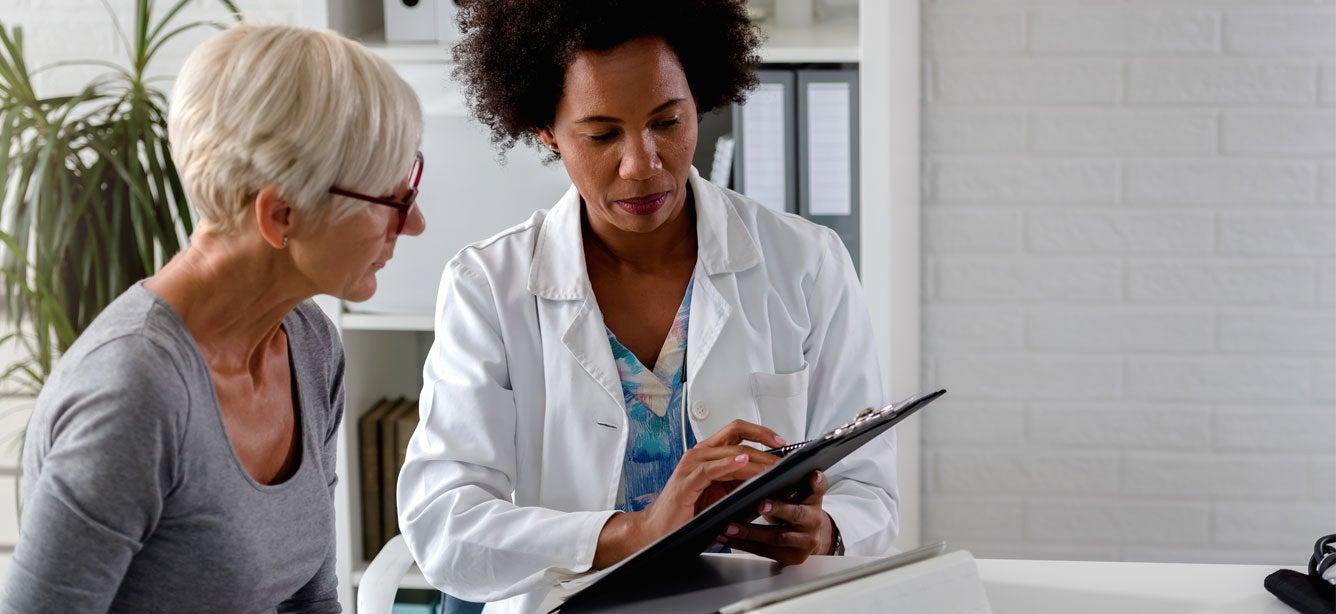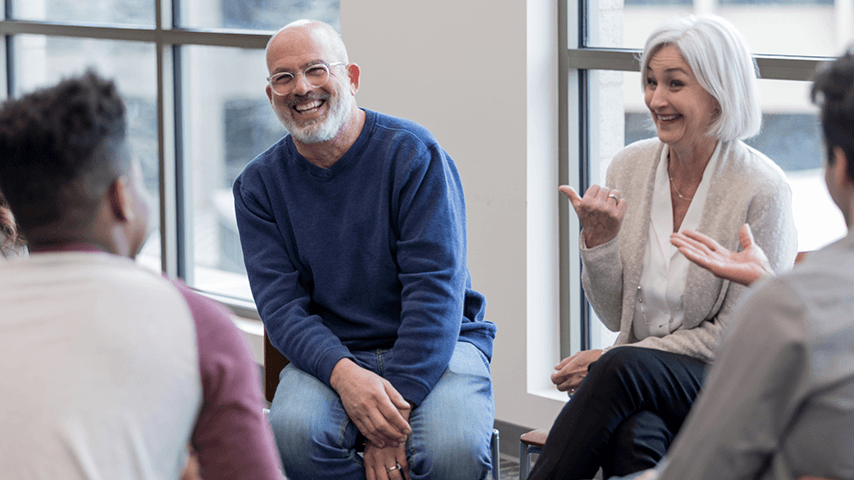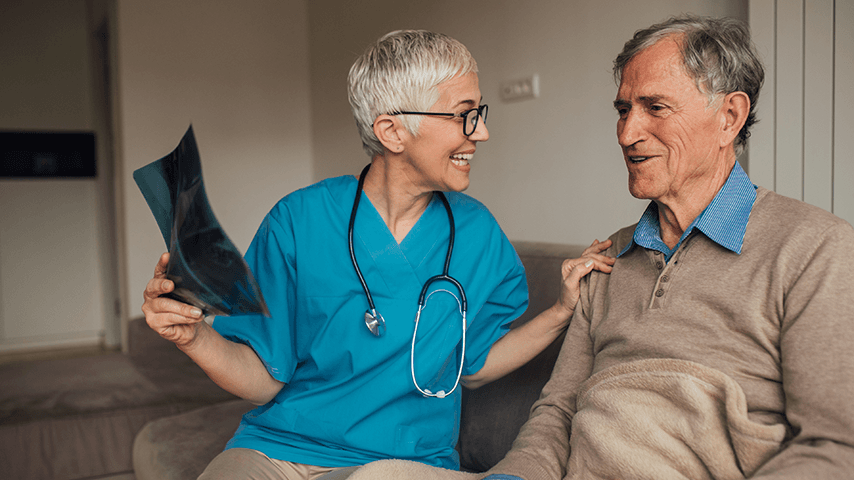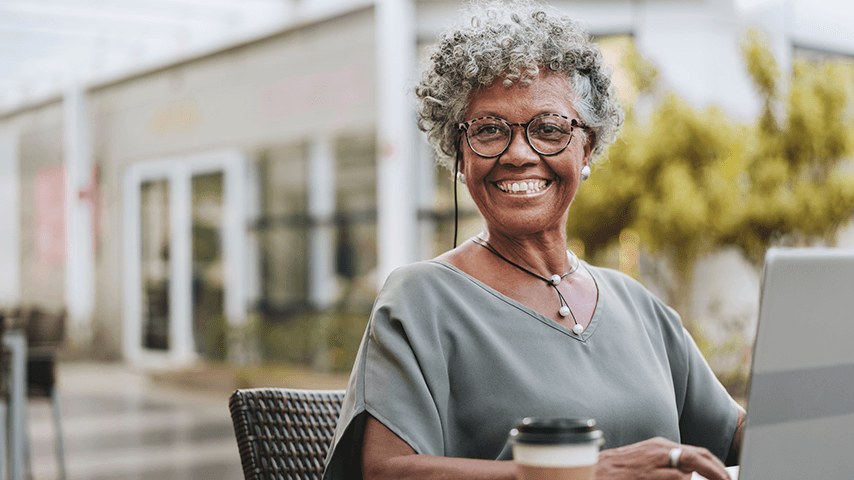How Assistive Technology and Adaptive Equipment Help People Living with Vision Loss
5 min read

Related Topics
Technological advancements continue to dramatically impact how people with blindness and low vision connect with the world around them.
Accessible technology, low vision devices, and adaptive equipment are essential components of vision rehabilitation training. Their use increases a person’s connections, confidence, safety, and independence.
What tools, devices, and systems can help people with blindness and low vision?
A broad range of tools, devices, and systems provide vital access to information and enhanced communication and interactions with digital content for people with blindness and low vision. Options vary from high to lower-tech and high-cost to lower-cost solutions. Examples include:
- Screen readers—Screen reading software such as JAWS translates screen information into electronic text then sends it to a speech synthesizer (for audio reading) and/or a refreshable Braille display (for tactile reading). A Braille Embosser can also be used to print Braille materials.
- Braille keyboards—Help make typing more accessible on computers and smart devices.
- Screen magnifiers—Magnifying software can enlarge items and onscreen content and text, making it easier for people with low vision to read text and view images and other graphics. Alternate Text is increasingly used for digital information to describe pictures and other graphics. Larger monitors and screens also assist when viewing onscreen content.
- Optical character Rrcognition (OCR)—translates printed text into digital text that screen readers can convert for audio output.
- Voice assistants—Voice-activated assistants can assist people living with vision loss with various tasks, including managing a calendar, locating recipes, creating shopping lists, setting reminders for medical and other appointments, listening to music, audiobooks, podcasts, and so much more. Voice Assistants can also be used to control many smart home devices to adjust heating, lighting, and more.
- Smartphones table accessibility features—Accessibility features can enhance the use of smart devices for people with blindness and low vision, some through voice activation. Screen displays can be customized for larger text size, color, and contrast. Screen magnification may be used to magnify the area and items in front of the camera, including a larger area, images, and text. Be sure to check the accessibility features on your device, as they can vary based on your device’s hardware and software.
- Audio description services—provide descriptive narration for movies, TV and cable shows, or live performances to communicate visual content to people with vision loss.
Added devices empower people with vision loss to complete daily tasks more easily. Examples include, but are not limited to:
- Talking or large print devices—Provide information audibly or increase the size or contrast of information. Examples of talking devices include talking calculators, watches, and scales. Braille watches are also available so wearers can track time through touch.
- Large print and Braille books and notetakers—Help people with vision loss access vital information, read, write, and store digital text. Additionally, Audiobooks help continue the joy of reading. Handheld and other types of magnifiers can also be used to increase the size of objects, text, and content.
- Tactile markers and Braille labelers—Create labels to help identify objects by touch. These labels can be used throughout the home and office to identify equipment and appliance settings. They can also be used to identify items and objects, e.g., food, personal hygiene supplies, cleaning, and other products. QR codes and other codes are also being used to access information audibly. Did you know Spoken RXä, offered by CVS Pharmacy, helps those with vision loss confirm the prescription in hand and how to use it?
To aid in orientation and mobility, which is core vision rehabilitation training, various apps and aids can assist with orientation and travel. For example:
- GPS and navigation apps—Mobile apps designed for navigation can provide auditory directions and location information on your mobile device.
- Smartphone apps for object recognition—Apps access the smart device camera to describe objects in the environment or text audibly.
- Electronic travel aids—Devices that use ultrasound or laser technology to detect obstacles and provide auditory feedback or vibration
As technology options expand, there is continued hope that companies will incorporate accessibility— for people with blindness, low vision, and other disabilities—into their hardware and software as it’s being developed. Only then will everyone have equal access to information and communication—vital components for a rich quality of life.
Your local vision rehabilitation agency can provide crucial training and help determine optimum technology, devices, and aids based on specific vision loss and daily challenges. Visit Time to Be Bold to locate local vision rehabilitation services and other vital resources. Call the APH hotline to receive support and practical coping strategies for everyday tasks, join remote discussion groups, and access free online resources at the APH Connect Center and VisionAware.
To learn more about support for people with blindness and low vision, including vision rehabilitation services, enjoy the other articles in this series:
- What Are Vision Rehabilitation Services and How Can They Help Older Adults?
- Living Well With Blindness, Low Vision, and Vision Impairment
- Common Age-Related Eye Diseases: What to Know and What You Can Do
This project was supported, in part by grant number 90CSSG0048 and 90FPSG0051 from the U.S. Administration for Community Living, Department of Health and Human Services, Washington, D.C. 20201. Grantees undertaking projects under government sponsorship are encouraged to express freely their findings and conclusions. Points of view or opinions do not, therefore, necessarily represent official Administration for Community Living policy.




